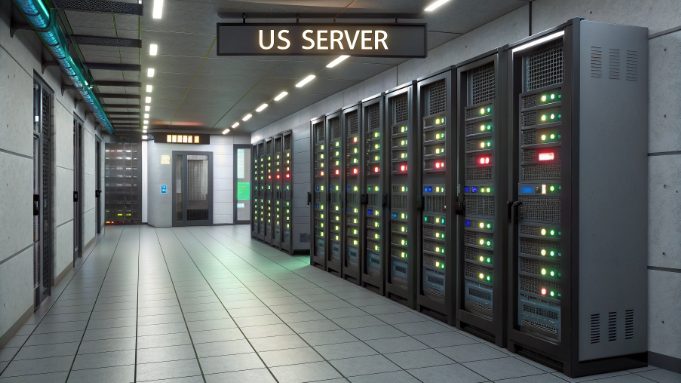Storage Solutions for Large Offshore Servers in the AI Era

The exponential growth of AI workloads has fundamentally transformed enterprise storehouse requirements. As machine learning models become increasingly sophisticated, the demand for high-performance storage solutions that can handle massive datasets while maintaining low latency has skyrocketed. This comprehensive guide dives deep into the technical considerations for selecting optimal server storage solutions for AI and ML operations.
Technical Requirements for AI Storage Infrastructure
Modern AI workloads present unique challenges that traditional storehouse architectures struggle to address. The primary technical requirements include:
- Sequential read/write speeds exceeding 3GB/s
- Random IOPS performance of 1M+ for training data access
- Ultra-low latency (sub-100μs) for real-time inference
- Parallel access capabilities for distributed training
Storage Architecture Deep Dive
Let’s analyze the three primary storehouse technologies powering AI infrastructure:
NVMe Storage Arrays
NVMe has emerged as the go-to solution for AI workloads, offering:
- PCIe Gen4 x4 bandwidth up to 8GB/s
- Parallelism with up to 64K command queues
- Sub-10μs latency for fast data access
- Direct memory access reducing CPU overhead
Enterprise SSD Arrays
While not matching NVMe’s raw performance, enterprise SSDs offer a balanced approach:
- Sustained read/write speeds of 2-3GB/s
- Enhanced durability with higher P/E cycles
- Better cost-per-GB ratio than NVMe
- Suitable for mixed AI/non-AI workloads
HDD Storage for Cold Data
Traditional HDDs still play a crucial role in AI storehouse architecture:
- Cost-effective storage for archived training data
- Capacities up to 20TB per drive
- Ideal for infrequently accessed datasets
- Essential for tiered storehouse strategies
US Data Center Storage Solutions Analysis
Major hosting providers have developed specialized storehouse solutions for AI workloads. Here’s a technical comparison of leading options:
| Provider | Storage Type | Max IOPS | Latency |
|---|---|---|---|
| AWS | io2 Block Express | 256,000 | < 1ms |
| Google Cloud | Extreme Persistent Disk | 200,000 | < 1ms |
| Azure | Ultra Disk Storage | 160,000 | < 1ms |
Architectural Considerations for AI Storage
When designing storehouse infrastructure for AI workloads, consider these technical factors:
Network Architecture
High-performance storage requires robust networking:
- 100GbE minimum for NVMe-oF deployments
- RDMA support for reduced latency
- Redundant fabric design for high availability
- Load balancing across storehouse nodes
Implementation Strategies for Different Scales
Storage architecture varies significantly based on computational requirements. Here’s a technical breakdown of recommended configurations:
Small-Scale AI Operations (< 100TB)
For startups and research teams:
- All-NVMe arrays for active datasets
- Direct-attached storehouse configuration
- Local caching with RAID 10 for performance
- Backup to cloud object storehouse
Medium-Scale Deployments (100TB – 1PB)
For growing enterprises:
- Hybrid storehouse architecture (NVMe + SSD)
- Distributed file system implementation
- Automated tiering policies
- Dedicated storage network fabric
Large-Scale Infrastructure (> 1PB)
Enterprise-grade solutions require:
- Scale-out NAS with parallel file systems
- Multi-tier storehouse with automated data movement
- Global namespace implementation
- Geographic data replication
Cost-Benefit Analysis
Understanding the TCO (Total Cost of Ownership) of different storehouse solutions is crucial for AI infrastructure planning:
| Storage Type | Relative Cost | Performance Index | Use Case |
|---|---|---|---|
| NVMe Arrays | High | 10/10 | Active Training Sets |
| Enterprise SSD | Medium | 7/10 | Mixed Workloads |
| HDD Arrays | Low | 3/10 | Archive Data |
Future Storage Technology Trends
The AI storage landscape is rapidly evolving with several emerging technologies showing promise:
Computational Storage
Next-generation storehouse solutions are integrating processing capabilities:
- In-storage computing for data preprocessing
- Neural processing units within storehouse devices
- Reduced data movement overhead
- Enhanced real-time processing capabilities
Storage Class Memory (SCM)
Emerging memory technologies are bridging the performance gap:
- Sub-microsecond latency access
- Non-volatile architecture
- DIMM form factor implementation
- Hybrid memory-storage capabilities
Implementation Recommendations
Based on current technology trends and enterprise requirements, here are key recommendations for AI storage infrastructure:
Technical Specifications
- Implement multi-tiered storehouse architecture
- Utilize NVMe-oF for high-performance requirements
- Deploy automated data lifecycle management
- Ensure redundancy across storehouse tiers
Infrastructure Planning
- Design for horizontal scalability
- Implement robust monitoring systems
- Plan for future capacity expansion
- Consider colocation services for large deployments
Conclusion
The selection of appropriate storehouse solutions for AI workloads requires careful consideration of performance requirements, scalability needs, and cost constraints. As AI and machine learning technologies continue to evolve, storehouse infrastructure must adapt to meet increasing demands for speed, capacity, and reliability. Whether opting for hosting solutions or colocation services, enterprises must carefully evaluate their storehouse architecture to ensure optimal performance for AI operations.
When designing your AI storage infrastructure, consider starting with a hybrid approach that combines high-performance NVMe storehouse for active datasets with cost-effective solutions for cold data storage. Regular assessment and updates of your storehouse strategy will ensure your infrastructure remains optimized for AI server storehouse requirements as technology continues to advance.

